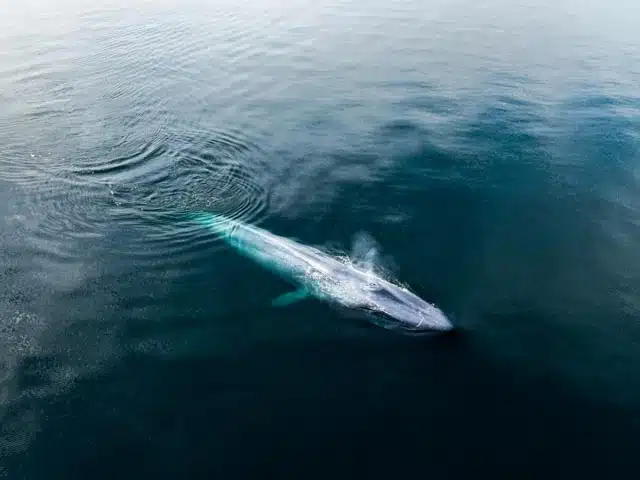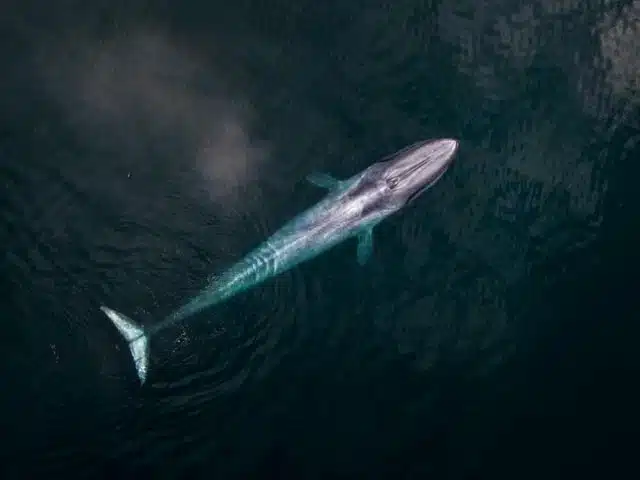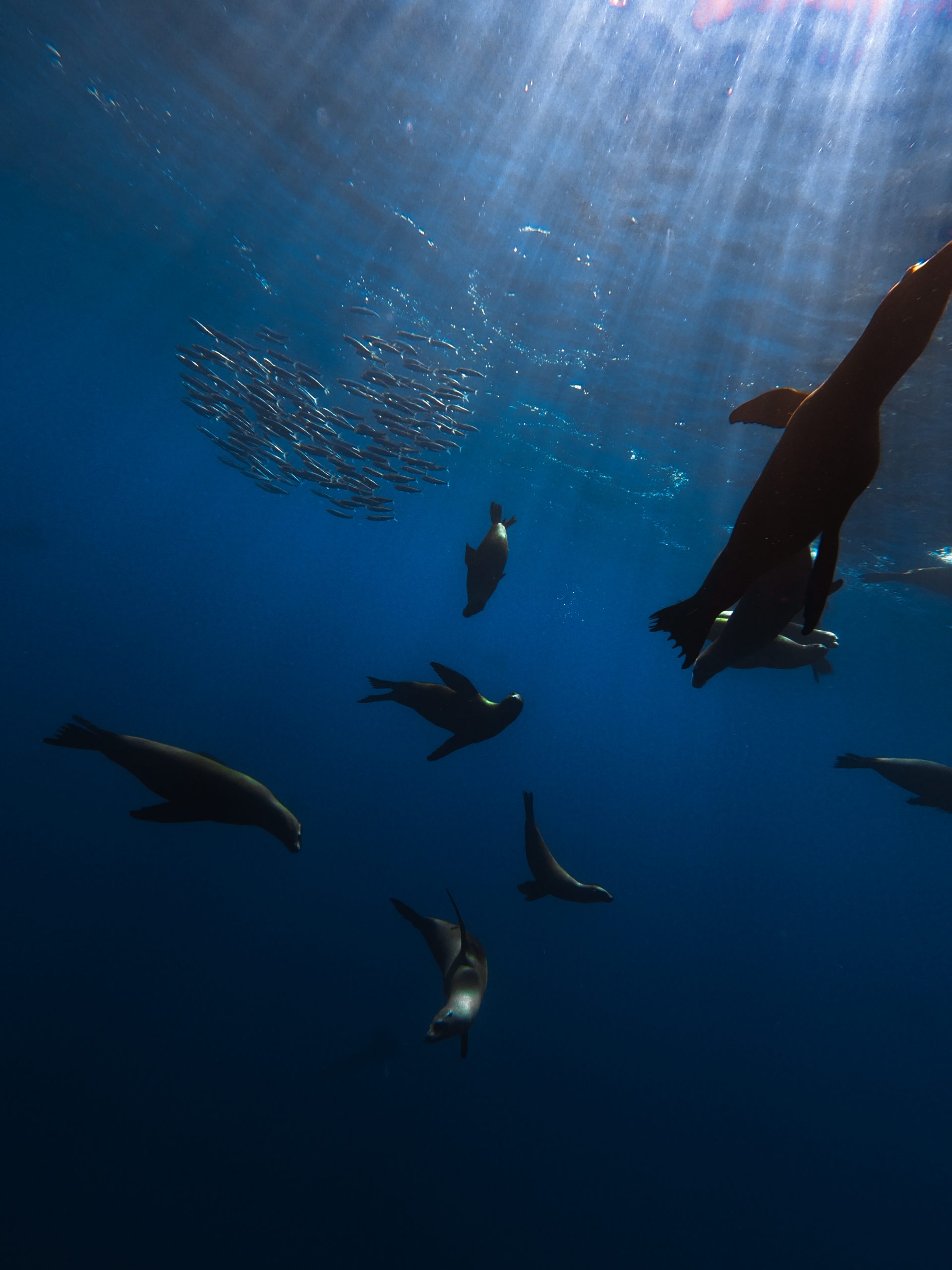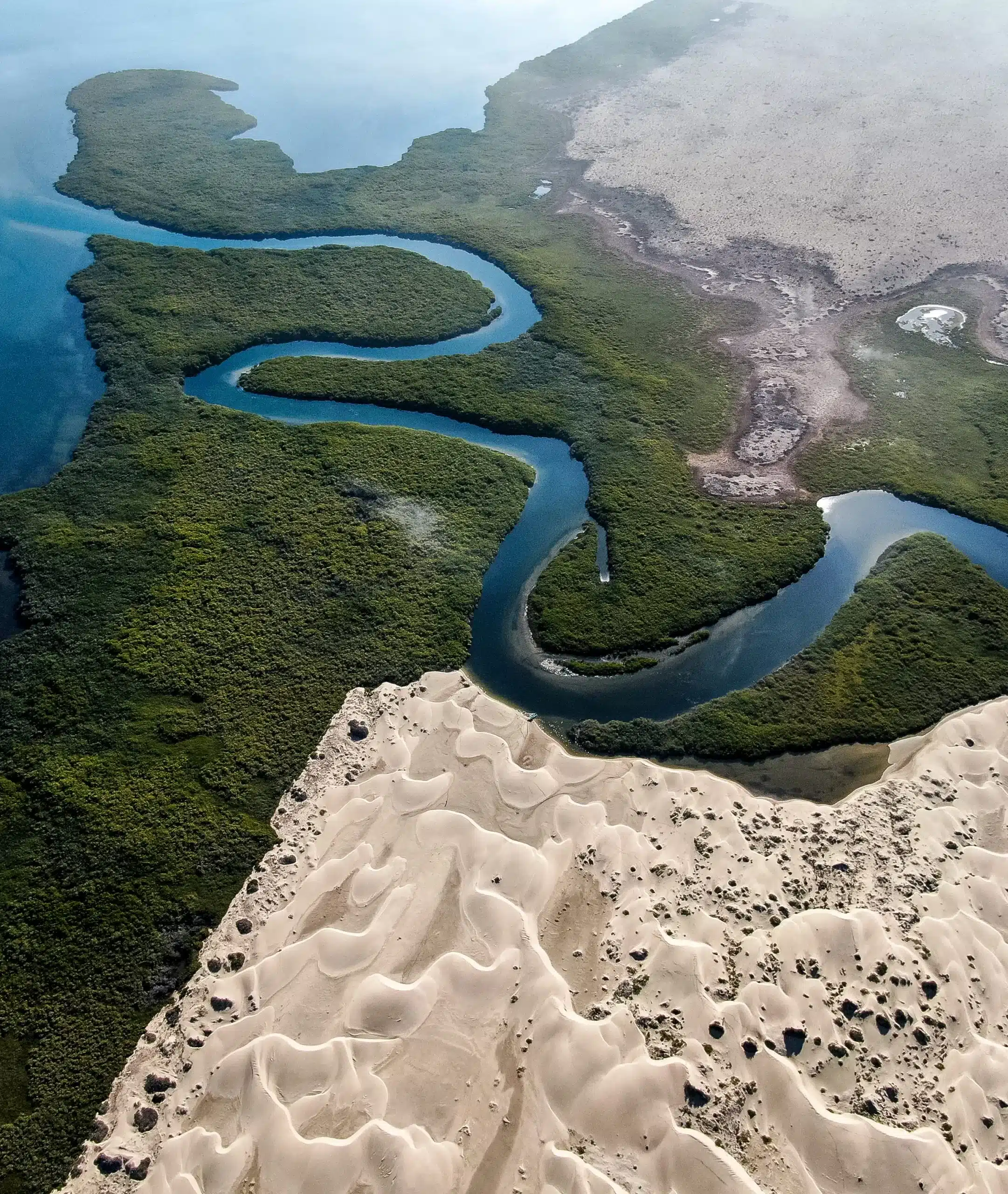The blue whale (Balaenoptera musculus) is the largest animal to have ever lived, reaching up to 100 feet in length and weighing nearly 200 tons. Despite their colossal size, blue whales are known for their grace and agility in the water, moving effortlessly through vast ocean expanses. Their elusive nature, however, makes every sighting an unforgettable experience.
Loreto, located in the Sea of Cortez, is one of the few places in the world where blue whales consistently return each winter, making it a prime destination for witnessing these giants in their natural habitat. From January to March, these waters become a sanctuary for blue whales, providing an unparalleled opportunity for marine enthusiasts and travelers eager to encounter the largest animal on Earth.
If you’re fascinated by marine life and want to learn more about another incredible species, check out our blog on ‘Fun Facts About Gray Whales: Discover the Secrets of the Friendliest Whales in the Ocean.’
FASCINATING FACTS ABOUT BLUE WHALES
1. HEART OF A GIANT
The heart of a blue whale is roughly the size of a small car and can weigh up to 1,500 pounds. It beats so powerfully that its thumping can be detected from over two miles away underwater. During deep dives, the heart rate slows to just 2-8 beats per minute, conserving oxygen, but can accelerate to nearly 40 beats per minute when the whale surfaces.
2. RECORD-BREAKING SOUNDS
Blue whales are among the loudest animals on the planet. Their low-frequency vocalizations can reach up to 188 decibels—louder than a jet engine—and travel across vast distances, potentially spanning hundreds of miles. These calls play a crucial role in communication, navigation, and mating, allowing blue whales to stay connected even in the expansive depths of the ocean.
3. DIET OF KILLER PROPORTIONS
Despite their immense size, blue whales feed almost exclusively on tiny shrimp-like crustaceans called krill. During peak feeding seasons, a single blue whale can consume up to 4 tons of krill per day. They use a technique called lunge feeding, where they accelerate toward dense swarms of krill with their mouths wide open, engulfing massive volumes of water before filtering out the krill through their baleen plates.
4. LIFESPAN AND LONGEVITY
Blue whales can live for 70 to 90 years, with some individuals potentially surpassing 100 years. Scientists determine their age by examining the layers of wax-like earplugs that accumulate in their ear canals over time, much like counting tree rings. These layers provide insight into not only their age but also environmental changes experienced throughout their lives.
5. BLUE WHALE CALVES: THE LARGEST BABIES ON EARTH
Blue whale calves are born after an 11 to 12-month gestation period and are the largest newborns of any animal on the planet. At birth, they measure between 23 to 25 feet long and weigh around three tons—roughly the size of a school bus. These calves consume an astonishing 200 liters of milk per day, gaining up to 200 pounds daily during their first year.
The bond between mother and calf is incredibly strong, as the young must quickly develop the energy reserves required for deep-water navigation and long migrations. Blue whale calves remain with their mothers for nearly a year, learning vital migratory routes and feeding techniques essential for survival.
6. THE SEA OF CORTEZ: A SANCTUARY FOR BLUE WHALES
The Sea of Cortez, often referred to as the “Aquarium of the World,” offers one of the most consistent and accessible locations for blue whale sightings. Its nutrient-rich waters attract krill, drawing blue whales during their winter migration. Loreto, in particular, is a hotspot for responsible whale-watching excursions, allowing visitors to observe these giants while promoting conservation efforts.
Insider Tip: Combine your blue whale-watching adventure with other marine activities, like snorkeling with sea lions or exploring the nearby Isla del Carmen, to fully experience the marine diversity of the region.
For more marine adventures, check out our blog on Underwater Wonders: Cabo’s Vibrant Marine Life.
7. CONSERVATION STATUS: FROM HUNTING TO HOPE
Blue whales were pushed to the brink of extinction during the 20th century due to commercial whaling, with populations plummeting by nearly 90%. International protection efforts, including the 1966 whaling ban, have allowed some populations to make a slow but steady recovery. Despite this progress, blue whales remain listed as endangered, facing modern threats like ship strikes, ocean noise pollution, and climate change, which impacts krill populations.
Responsible whale-watching practices, marine protected areas, and continued research are vital to ensuring the survival of these majestic giants.
BOOK YOUR BLUE WHALE WATCHING ADVENTURE TODAY
Don’t miss the opportunity to witness the largest animal on Earth in its natural habitat. Join our WHALE WATCHING tour and experience the awe-inspiring sight of blue whales gliding through the pristine waters of Baja California Sur.
BOOK NOW and create memories that will last a lifetime as you encounter the ocean’s most elusive and magnificent giant.












